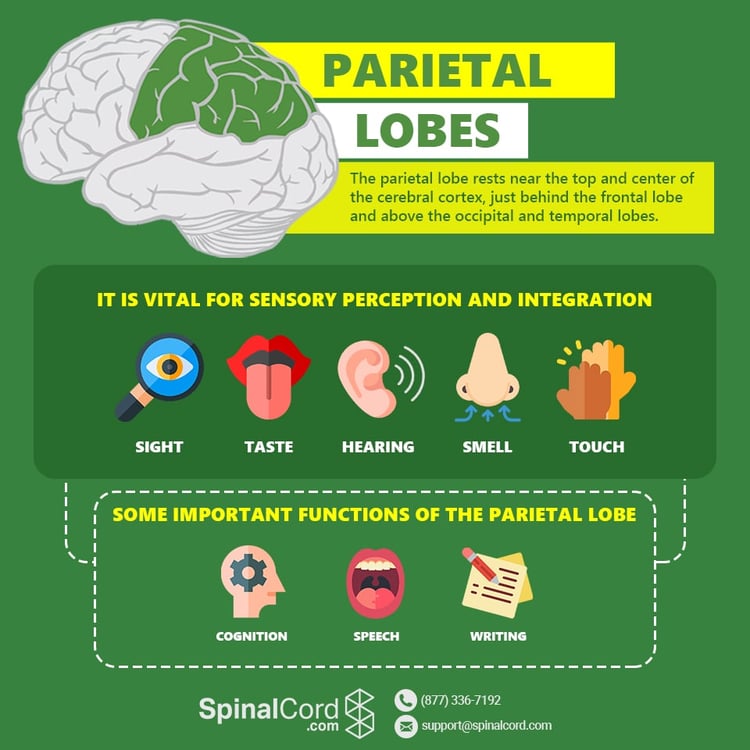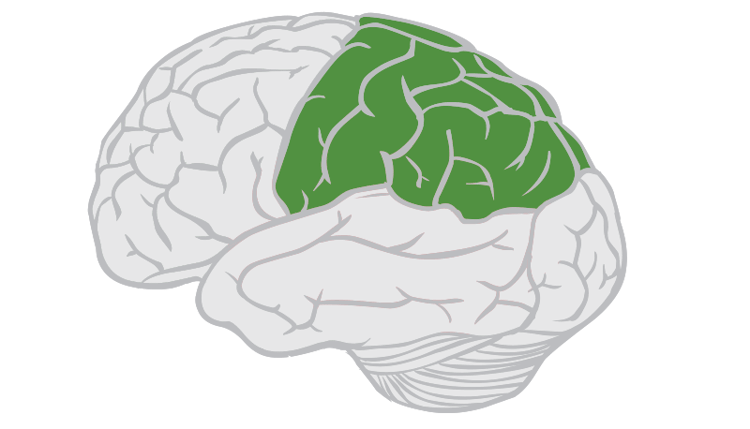Learning outcomes
Here is what you should be able to do at the end of this module:
- Identify a common misconception of the parietal lobe
- Identify the structure of the parietal lobe
- Identify the parietal lobe’s location in the brain
- Identify the functions of the parietal lobe
Module Overview
- Introduction
- Common misconception
- Learning activity 1
- Strucute and location
- Learning activity 2 & 3
- Functions
- Learning activities 4
- Conclusion
- Learning activity 5
Introduction
The parietal lobe is the brain lobe responsible for a variety of functions. Most notably, it undertakes the large job of integrating all of our five senses into one fluid stream of reality (Physiopedia, n.d.).
In this module, you will explore the mystical parietal lobe in terms of structure, location, and function, all of which will help you toward creating a holistic conception about the human brain.
As you go through this module, be sure to take the time to engage in each of the supplementary technologies. This will support you in your learning by allowing you to think about the topic from different perspectives while employing different brain faculties.

Common Misconception
Let’s start with a common misconception about the parietal lobe. One common misconception about the brain is that any part of the organ can control any function. In reality, each lobe of the brain has a dedicated function and collaboratively works in conjunction with the rest of the lobes and the body (Physiopedia, n.d.). Subsequent sections of this module will detail the specific function of the parietal lobe in particular and then describe how this lobe works with the other lobes.
Learning Activity 1 – Check Your Knowledge
Answers and suggestions for further learning can be found on the Supplemental Materials page.
Structure and Location
The parietal lobe is one of the 4 distinct brain lobes which is located right under the parietal bone and around the cerebral cortex (Spinalcord.com Team, 2020). Additionally, as the brain is separated into the left hemisphere and the right hemisphere, the parietal lobe is also split into the left parietal lobe and the right parietal lobe (Spinalcord.com Team, 2020). In relation to the other three brain lobes, the parietal lobe is located in the top center of the brain, which is right behind the frontal lobes location and on top of the temporal and occipital lobes.

Learning Activities 2 & 3 – Check Your Knowledge
Answers and suggestions for further learning can be found on the Supplemental Materials page.
Function
The main functions of the parietal lobe is sensory perception and integration which includes touch, taste, hearing, sight, and smell (Parietal Lobe, n.d.). The parietal lobe interprets information from other body parts. Touch and spatial perception are two types of information that the parietal lobe is responsible for (Knapp, 2021). Also, for letting us know when there is pain, pressure, or a change in temperature to the body (Lobes of the brain, 2016).
Learning Activities 4 – Check Your Knowledge
Answers and suggestions for further learning can be found on the Supplemental Materials page.
Conclusion
Congratulations, you have completed Module 1! You are now 25% through the learning resource, and are one step closer in your journey towards understanding the human brain and all that it has to offer.
Before you move forward to the next module, test your knowledge with the mix and match activity below. Once completed, you can judge whether you are ready to move on or if you’d like to go back over some of the content and try the mix and match again.
If you feel that you would like some additional resources to supplement your learning, check out the formattive assesments answers page for additional technologies.
Learning Activity 5 – Check Your Knowledge
Answers and suggestions for further learning can be found on the Supplemental Materials page.
Do you feel as though you’ve acheived the learning outcomes?
- “Yes”
- Head on over to the next module
- If you are going in order, you should move onto Module 2
- Head on over to the next module
- “Not Quite”
- That’s okay, try exploring the supplemental materials to help you better digest the concepts